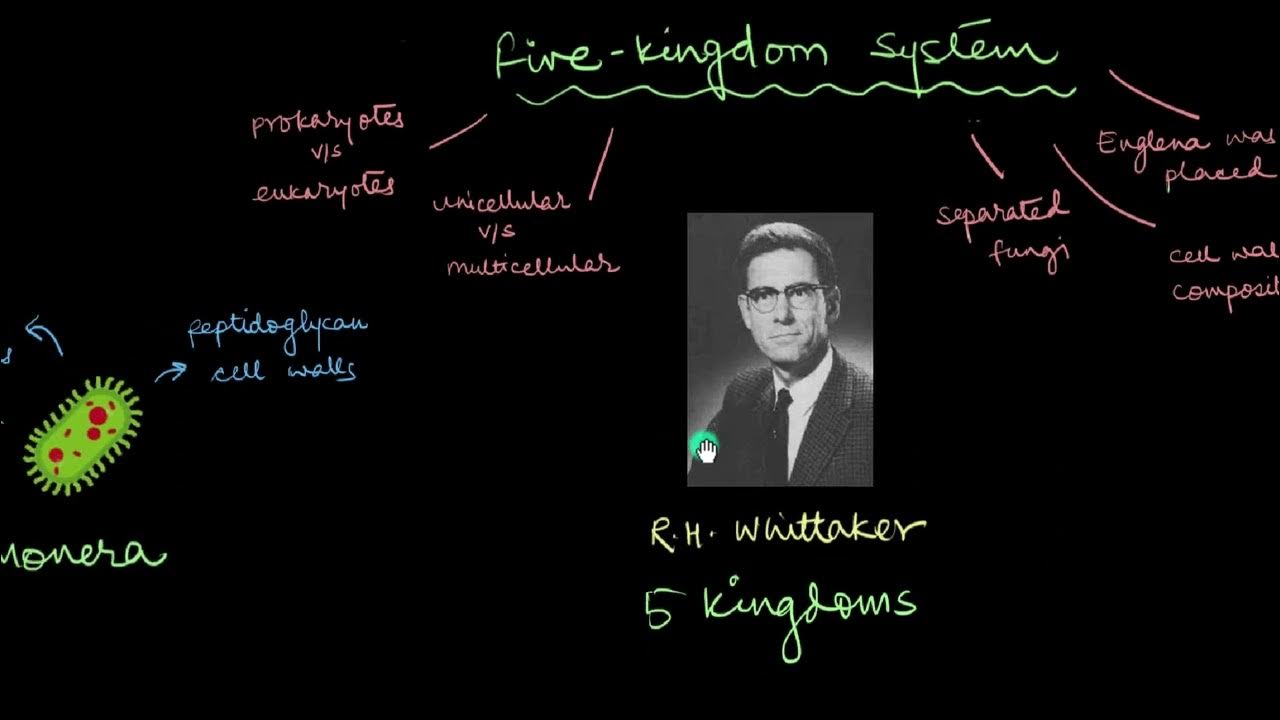Basic Taxonomy-6 Kingdoms of Life-Classification
Summary
TLDRThis video explores the six kingdoms of life: Bacteria, Archaea, Protista, Fungi, Plantae, and Animalia. It delves into their characteristics, such as prokaryotic vs. eukaryotic cells, modes of reproduction, and roles in ecosystems. The script covers the diversity within each kingdom, from bacteria's crucial role in our lives to the wide variety of plants, the unique traits of protists, the importance of fungi in decomposition, and the distinct features of animals, including vertebrates and invertebrates.
Takeaways
- 🌿 The six kingdoms of life include Bacteria, Archaea, Protista, Fungi, Plantae, and Animalia, encompassing all living organisms on Earth.
- 🔬 Kingdom Monera is now divided into Bacteria and Archaea, both consisting of single-celled prokaryotic organisms without a nucleus.
- 🌞 Bacteria obtain energy through various methods such as photosynthesis, chemosynthesis, or by breaking down organic material.
- 🌱 Plants are multicellular eukaryotes that produce their own food through photosynthesis and are categorized into vascular and nonvascular types.
- 🌳 Vascular plants have specialized tissues for transporting water and nutrients, allowing them to grow larger, while nonvascular plants like moss rely on osmosis.
- 🌼 Angiosperms are flowering plants with reproductive structures like carpels, while gymnosperms reproduce via airborne pollen and lack flowers.
- 🦠 Protista is a diverse kingdom with eukaryotic organisms that don't fit into other categories, including both unicellular and multicellular forms.
- 🍄 Fungi, including mushrooms, molds, and yeasts, are heterotrophic and play crucial roles in decomposition and symbiotic relationships with plants.
- 🌐 Fungi reproduce through spores and have cell walls made of chitin, unlike plants which have cellulose walls, and they lack chlorophyll.
- 🐠 The Animalia kingdom comprises multicellular, eukaryotic, heterotrophic organisms that cannot produce their own food and are mostly capable of movement.
- 🐍 Animals are divided into vertebrates (with backbones) and invertebrates (without backbones), with each group exhibiting a wide range of adaptations for survival.
Q & A
What are the six kingdoms used to classify life on Earth?
-The six kingdoms used to classify life on Earth are Bacteria, Archaea, Protista, Fungi, Plantae, and Animalia.
How is the Kingdom Monera different from the other kingdoms?
-The Kingdom Monera is unique because it consists entirely of single-celled prokaryotic organisms that do not have a nucleus or membrane-bound organelles.
What are the two groups that the Kingdom Monera is divided into?
-The Kingdom Monera is divided into two groups: Archaea and Bacteria.
What are some of the extreme environments where Archaea can be found?
-Archaea can be found in extreme environments such as the stomachs of cows, hot springs, the Dead Sea, and swamps and marshes.
How do bacteria obtain their energy?
-Bacteria obtain their energy through various methods, including from the Sun, from chemicals like CO2, and by breaking down organic material.
What are the main characteristics of the Kingdom Plantae?
-The Kingdom Plantae is characterized by multicellular eukaryotic organisms that obtain their energy from the Sun, have cell walls made of cellulose, large central vacuoles, and chloroplasts containing chlorophyll for photosynthesis.
What is the process by which plants convert carbon dioxide and water into glucose and oxygen?
-The process by which plants convert carbon dioxide and water into glucose and oxygen is called photosynthesis.
What are the two major categories of plants?
-The two major categories of plants are vascular and nonvascular plants.
How do fungi differ from plants in terms of their cell walls?
-Fungi have cell walls made of chitin, while most plants have cell walls made of cellulose, with the exception of molds which also have cellulose in their cell walls.
What is the primary mode of reproduction for fungi?
-The primary mode of reproduction for fungi is through spores, not seeds.
What are the common traits shared by all members of the Kingdom Animalia?
-All members of the Kingdom Animalia are eukaryotic, multicellular, heterotrophic, and almost all are capable of movement.
What are the two major categories of animals?
-The two major categories of animals are vertebrates, which have a backbone, and invertebrates, which do not.
What is the significance of the Kingdom Protista, and how is it different from other kingdoms?
-The Kingdom Protista is significant because it is a diverse group where many organisms that do not fit into other kingdoms are classified. It includes both unicellular and multicellular eukaryotic organisms that can be autotrophs, heterotrophs, decomposers, or parasites.
Outlines

This section is available to paid users only. Please upgrade to access this part.
Upgrade NowMindmap

This section is available to paid users only. Please upgrade to access this part.
Upgrade NowKeywords

This section is available to paid users only. Please upgrade to access this part.
Upgrade NowHighlights

This section is available to paid users only. Please upgrade to access this part.
Upgrade NowTranscripts

This section is available to paid users only. Please upgrade to access this part.
Upgrade NowBrowse More Related Video

Chapter 1 - pt2a - Cellular Foundation pt1

Conheça os 5 Reinos dos seres vivos

Perkembangan Sistem Klasifikasi Makhluk Hidup

BAB 5 Klasifikasi Makhluk Hidup Lima Kingdom || IPA Kelas 7 Kurikulum Merdeka

Isna Oriza N - PJJ Pembuatan Video Pembelajaran

Systems of Classification | Biological Classification | Biology | Khan Academy
5.0 / 5 (0 votes)